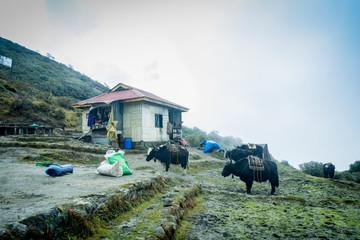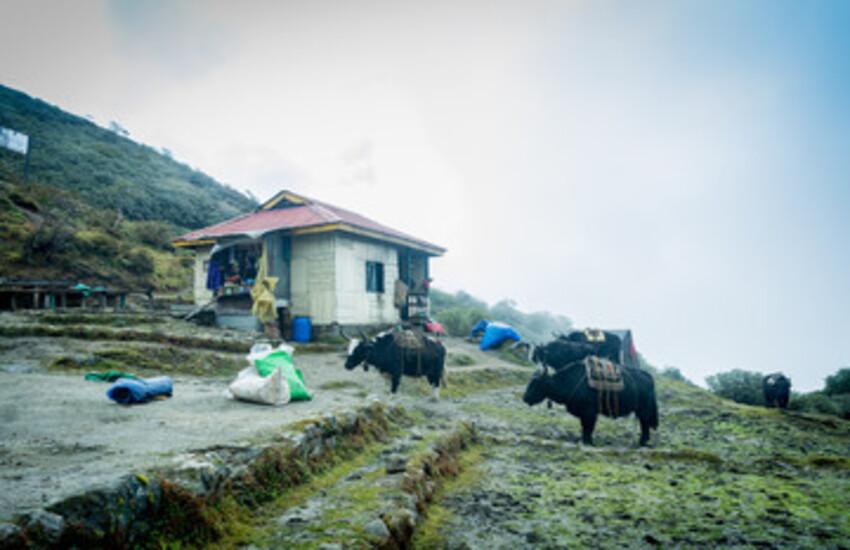Nestled in the heart of the Himalayas, the Dzongri Trek offers adventure enthusiasts a chance to explore the pristine beauty of Sikkim, India. This trek is a hidden gem that takes you through lush forests, picturesque meadows, and breathtaking views of some of the world’s highest peaks. In this article, we will embark on a virtual journey through the Dzongri Trek, providing you with all the essential information you need to plan your adventure.

Dzongri Trek itinerary
Here is a possible itinerary for the Dzongri Trek:
Day 1:
Arrive in Darjeeling and drive to Manebhangla (2,730 meters).
Day 2:
Trek from Manebhangla to Tumling (3,075 meters) (4-5 hours).
Day 3:
Trek from Tumling to Dzongri (3,962 meters) (6-7 hours).
Day 4:
Acclimatization day at Dzongri.
Day 5:
Trek to Sandakphu (4,241 meters) (4-5 hours).
Day 6:
Trek from Sandakphu to Thangu (3,880 meters) (4-5 hours).
Day 7:
Trek from Thangu to Deorali (3,650 meters) (4-5 hours).
Day 8:
Trek from Deorali to Phalut (3,480 meters) (6-7 hours).
Day 9:
Trek from Phalut to Manebhangla (2,730 meters) (4-5 hours).
Pricing for Dzongri Trek
The pricing and package for the Dzongri Trek vary depending on the trekking agency you choose, the number of days you trek, and the level of service you require. However, here is a sample package for a 5-day Dzongri Trek:
Cost per person: INR 11,000 (USD 140)
Inclusions:
- Accommodation in tents
- All meals
- Transportation to and from the trek starting point
- Trekking guide
- Porters
- Permits
- First aid kit
Exclusions:
- Personal expenses such as laundry, drinks, and souvenirs
- Tips for the guide and porters
Dzongri Trek Highlights
Here are some of the highlights of the Dzongri Trek:
Stunning views of the Kanchenjunga mountain range: The Kanchenjunga mountain range is the third-highest mountain range in the world, and it is a sight to behold. The Dzongri Trek offers some of the best views of the Kanchenjunga range, including Mt. Kanchenjunga, Mt. Pandim, and Mt. Kabru.
Abundant wildlife: The Singalila National Park is home to a variety of wildlife, including snow leopards, red pandas, and Himalayan tahr. Birdwatchers will also enjoy the park, which is home to over 300 species of birds.
Challenging yet rewarding trek: The Dzongri Trek is challenging, but it is also a rewarding one. The trek offers stunning views, challenging climbs, and a chance to experience the beauty of the Himalayas.
Unique culture and history: This trek passes through several villages, each with its own unique culture and history. Trekkers can learn about the local culture and history from the locals.
Opportunity to connect with nature: This trek is a great way to connect with nature. Trekkers will have the opportunity to hike through forests, meadows, and mountain passes. They will also get to experience the clear mountain air and the sound of the birdsong.
How to Reach Dzongri
There are two main ways to reach the starting point of the Dzongri Trek:
By air:
The nearest airport is Bagdogra Airport in Siliguri. From Bagdogra, you can take a taxi or bus to Darjeeling.
By train:
The nearest railway station is New Jalpaiguri Railway Station in Siliguri. From New Jalpaiguri, you can take a taxi or bus to Darjeeling.
Once you reach Darjeeling, you can drive or take a taxi to Manebhangla, which is the starting point of the trek.
The distance from Bagdogra Airport to Darjeeling is about 123 kilometers (76 miles), and the journey takes about 3 hours by road. The distance from New Jalpaiguri Railway Station to Darjeeling is about 78 kilometers (48 miles), and the journey takes about 2 hours by road.
From Manebhangla, the trek to Dzongri is about 6-7 hours. The trail is well-maintained and easy to follow.
Best time for Trekking
The best time for trekking in Dzongri is during the spring (March-May) or autumn (September-November).
During these seasons, the weather is mild and sunny, with clear views of the mountains. The trails are also dry and free of snow, making it a more comfortable and enjoyable trek.
The monsoon season (June-August) is not recommended for trekking in Dzongri as the trails can be slippery and muddy, and there is a risk of landslides. The winter season (December-February) can also be cold and snowy, making it a challenging trek for beginners.

Leave a Reply